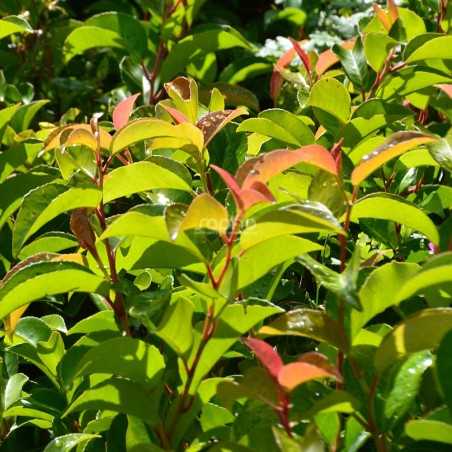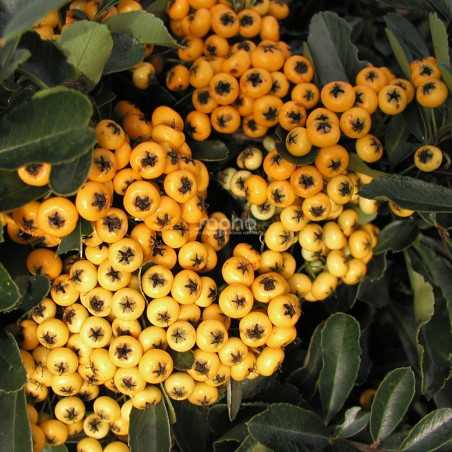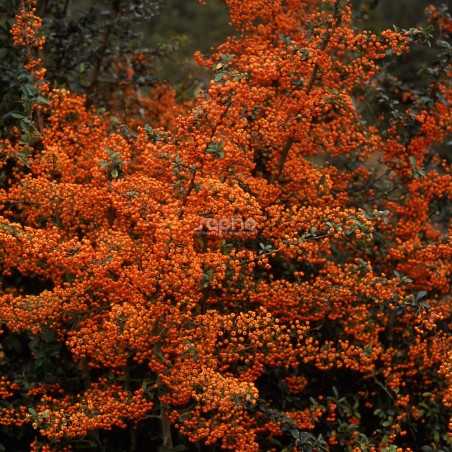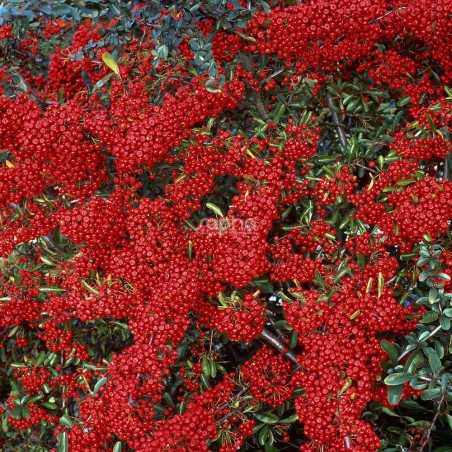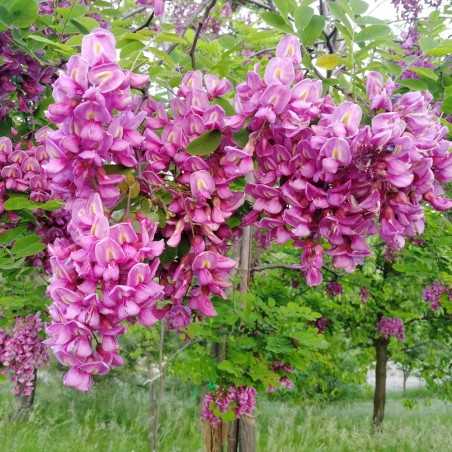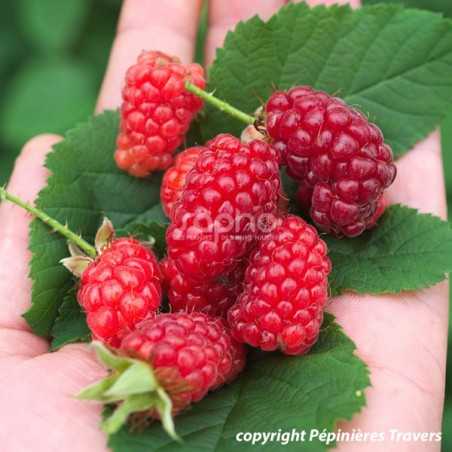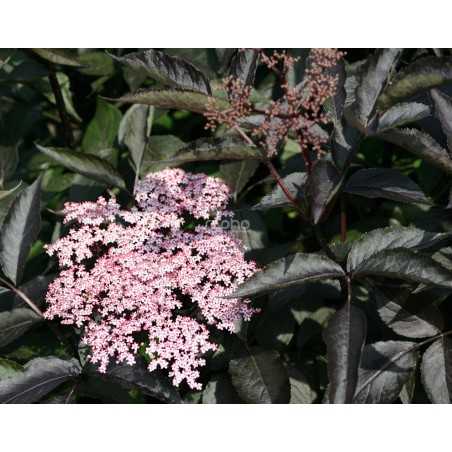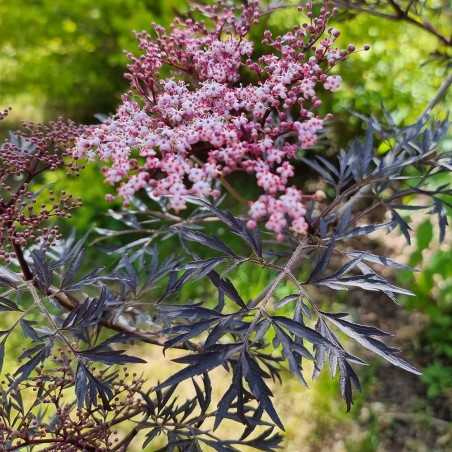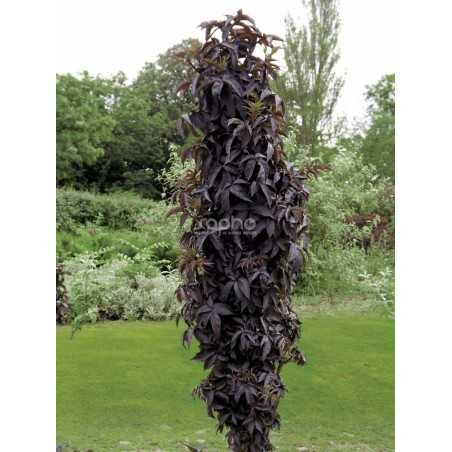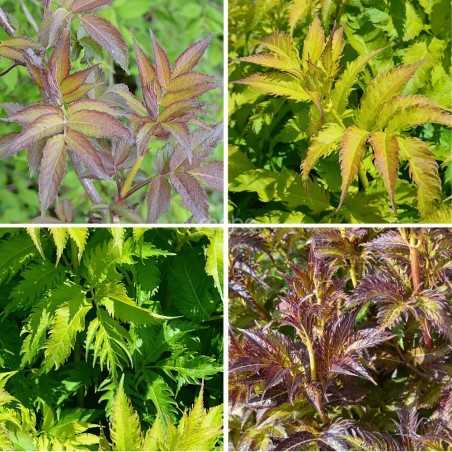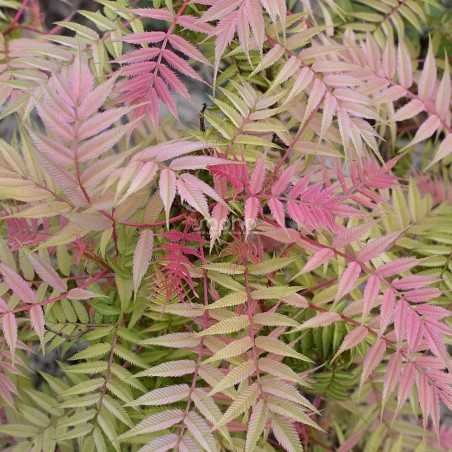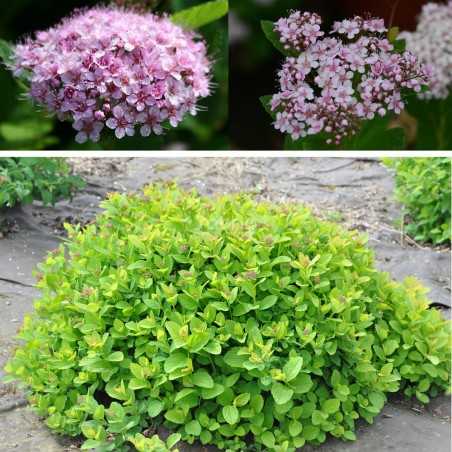Worth a try: a new evergreenThis new evergreen is an asset for the producer: its growth is vigorous and it forms very well. The young shoots offer a pretty bronze shimmer, later the foliage turns bright light green, which contrasts with the red petioles. In the autumn it turns bronze green.The slightly flared and drooping shape as well as the small and curled leaves give the shrub a light and natural silhouette.Very hardy for a Prunus azorica. Ideal for the revival of hedges!
Filter By
Foliage
Position
Categories
Menu
Trees and shrubs
Yellow fruits for this resistant Pyracantha of the SAPHYR® range.This cultivation has all the characteristics of the SAPHYR® range.SAPHYR® Jaune 'Cadaune', very vigorous, bears, from Mid-October, numerous yellow berries, which last a long time, later turning to yellow-orange.
Hardy Pyracantha of the SAPHYR® range with orange berries.This variety has all the characteristics of the SAPHYR® range.SAPHYR® Orange 'Cadange', fast growing, has a profusion of big bright orange berries from September onwards, lasting the best part of the winter.
Hardy Pyrancantha of the ; SAPHYR® range, with red berries.This variety has all the characteristics of the SAPHYR® range.SAPHYR® Rouge 'Cadange', medium fast growing.From September onwards until December, it bears an abundance of big, shiny, bright red berries finally turning orange at the end of the season.
A spectacular improvement of ‘Pink Cascade’
This variety is the result of numerous improvements to the red helmet variety, and has strong, flexible branches (virtually thornless).
Its generous flowering offers large clusters of crimson-pink flowers that are very melliferous.
Resistant to heat, drought, wind and pests, it thrives even in poor soil.
Use as an isolated plant or in the garden.
A highly fructiferous tayberry
Tayberries are a cross between a blackberry and a raspberry. Bounty Berry is a new variety which is notable for the generous quantity of fruit it produces: 35 kg from its second year of planting on. It has the flavour of raspberries and the vegetation of blackberries. Fast-growing in spring, it should be tied to a support and can then be easily trained on a trellis. Its white flowers grow quite early, appearing from May to July. Its tasty fruits ressemble big, very long raspberries which are violet-pink when they mature in July and August.
Trophy :
Jard'innov 2021 Gold Trophy
A purple elder all summer long.The purple, nearly black colour of this variety of Elder lasts all summer long. The shrub tolerates half shade, but planting it in full sun, emphasizes the beautiful colour of the foliage. Its growth is bushy with straight branches.In May - June, the big, delicate flowers are deep pink, turning light pink and finally white, contrasting well with the dark foliage. They are pleasantly lemon scented.At the end of summer, the dark purple, later black berries are appreciated by the birds.BLACK BEAUTY should be planted individually or in free growing shrub-hedges, together with evergreens, for example.Its purple colouring is a precious asset for colour variations in hedges. Its flowers and berries are of strong ornamental interest.
Purple and lacinated, a very decorative elderThis elder is very elegant thanks to its big, deep purple, nearly black, finely dissected leaves. The young shoots are green. The shrub tolerates half shade, but planting it in full sun, emphasizes the beautiful colour of the foliage. Its growth is medium.In June, BLACK LACE is covered in flat, pink buds, getting paler at the opening stage to become a creamy white. The contrast to the dark foliage is remarkable.At the end of summer, the dark purple then black berries are appreciated by the birds.Its purple and lacinated foliage, its abundant flowers and berries make it an decor for the garden. BLACK LACE should be planted individually or in free growing shrub-hedges, together with evergreens, for example.
Dark purple elder with an upright and thick shape.BLACK TOWER has an interesting upright and naturally thick shape.Its young shoots are green. Then the large-sized foliage becomes deep purple brown, covering the plant from the base upwards.In June - July, from a very young age, nearly at every node, numerous quite small pink and white flowers open, contrasting with the foliage. Black fruit appear in the autumn.
A serenade of brilliant coloursThe compound and toothed leaves are at first purple brown as the buds burst, then turn bronze to golden yellow and end up light green. The shrub thus shows different shades simultaneously, giving it a shimmery effect. Plant in a sunny position to show off all these colours at their best. In the autumn the leaves turn purple again.From May - June the small creamy white inflorescences stand out harmoniously from the purple, yellow and green foliage. They are followed by black berries at the end of summer and in autumn.The shape of the shrub is erect and well branched.Among others for the decorative effect of its foliage, SERENADE is best used in beds and free standing hedgerows.
A novelty for the Sorbaria genus : foliage with long lasting colours, a growth that stays compact
Concerning the Sorbaria species, where novelties are rare, PINK HOPI® 'COUSORB05' has been chosen for its qualities, different from those of 'Sem'.The compound, serrated foliage is delicate, light and harmoniously layered. It is a remarkable plant, due to its young variegated shoots which are red, pink and cream, then veined with white. Bud burst is extremely precocious, starting in early March. The shoots withstand the cold (at least up to -3° C). The colourful period lasts a month longer than in the traditional varieties, the shrub shines until the end of Mai. Later, in the summer, the foliage turns green.The shape of PINK HOPI® has the additional advantage of staying compact and this selection produces less suckers. Its dense foliage makes it a good ground cover.The white flower panicles bloom in June - July.The shrub does not need any maintenance (neither treating nor pruning). It is very hardy.
The first Spirea betulifolia dressed in pinkThis Spirea has a very compact growth like a dense pillow and a ground cover. It has bright light green foliage. This is the first selection of the Betulifolia species whith coloured corymbs. It is generous in small light pink flowers during May-June; then, if it is cut back again after the first flowering, a second, somewhat lighter one follows at the end of summer.A beautiful innovation in the small shrubs, perfectly adapted in very cold regions.

